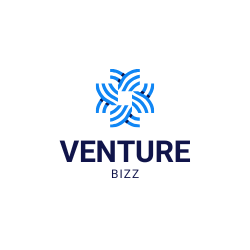Moat Building 101: How VCs Help Startups Build Defensibility Early
Series: Built to Scale – Week 7
Product, market, traction, and team are the metrics we hear about most when it comes to startups, but there is one critical ingredient that often gets overlooked: defensibility.
While early-stage founders rarely focus on it, the best venture capital firms do, because defensibility is what ultimately determines whether a startup can lead its category or gets outpaced by better-funded copycats.
In this issue, I dive into how VCs help founders think beyond MVPs and toward long-term competitive advantage.
What Is a Moat?
A moat is your startup’s unfair advantage, what keeps competitors from easily replicating your business. It is the protective layer around your revenue.
Common early-stage moats include:
Proprietary technology
Data network effects
Brand trust
Customer switching costs
Embedded distribution channels
Regulatory advantages
Why VCs Care So Much About Moats
Investors want outlier outcomes, 10x to 100x returns. That is hard to achieve without some degree of defensibility.
A startup that relies purely on speed or pricing advantage is vulnerable to capital-rich competition. VCs want to see:
A wedge into a growing market
Evidence that your position gets stronger with scale
Plans to deepen your moat over time
This is why the best VCs push founders early: What are you building that gets better as you grow, and harder to copy?
How VC Platform Teams Help Build Defensibility
Here are 5 ways VCs support early moat development:
1. Data Strategy
Advising on what proprietary data to collect from Day 1 and how to turn it into a competitive asset.
2. Product Architecture
Working with technical teams to design lock-in features, workflows, or integrations that make switching difficult.
3. Network Effect Design
Helping founders design products that get more valuable with more users, through referrals, content creation, or usage feedback loops.
4. Regulatory Navigation
In industries like fintech or healthcare, VCs help navigate compliance, turning regulatory complexity into a barrier to entry.
5. Strategic Partnerships
Facilitating deals or integrations that give startups preferred access to distribution channels or customer bases.
Founder Example: Building a Moat Through Data
One B2B SaaS startup in a VC portfolio started by collecting anonymized performance benchmarks from its early customers. With VC guidance, they transformed this into an industry-specific insights product, becoming the go-to platform not just for tools, but also for informed decision-making.
The result? Customers stayed longer, paid more, and competitors could not match the insight layer, even with similar features.
What Founders Should Ask Themselves (and Their Investors)
What will make this startup stronger on scale?
What am I collecting, building, or enabling that others cannot easily replicate?
Can my VC help me identify and deepen my moat?
If the answer is vague, press for further clarification. A weak moat may not be a problem today, but it will be when a competitor raises 10x your round.
Wrapping Up
You do not need a moat on Day 1, but you need a vision for one. Venture capital firms that think long-term help founders build startups that are not just fast, but defensible.
In next week’s issue, I shift from protection to traction: What Metrics VC Platforms Track and Why They Matter.
References
Elad Gil. (2018). High Growth Handbook: Scaling Startups from 10 to 10,000 People
NFX. (2021). The Network Effects Manual



